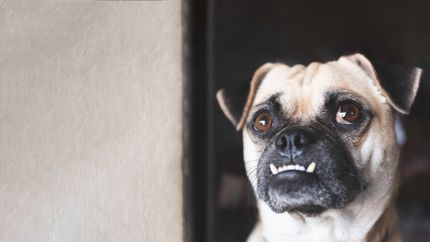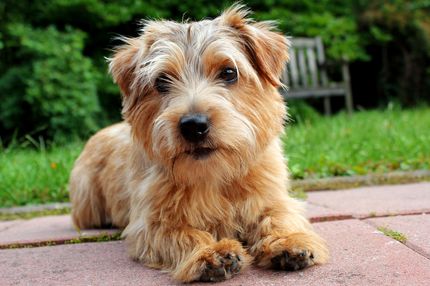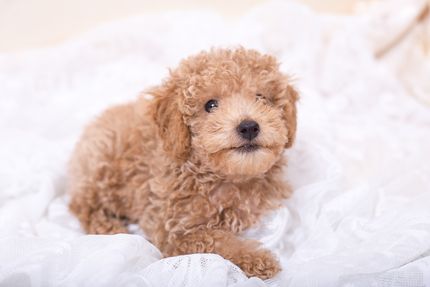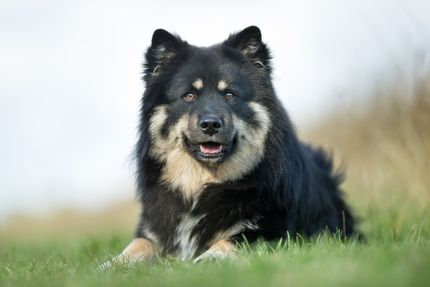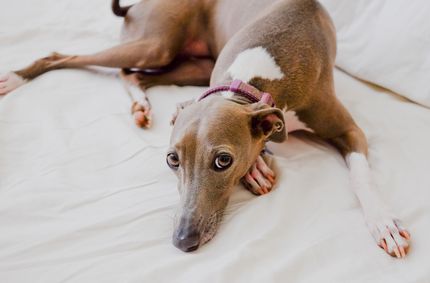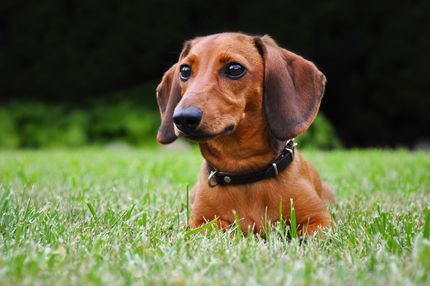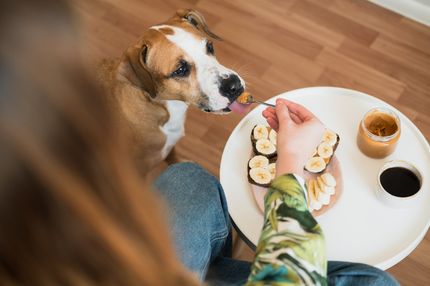Facts & Origin
Origin of the Pugalier
The Pugalier is a so-called designer dog and was created through the deliberate crossing of two popular dog breeds: the Pug and the Cavalier King Charles Spaniel. The aim of this breeding was to combine the charming, playful nature of both breeds - at the same time, however, some health problems, particularly the breathing problems of the Pug, were to be alleviated by crossbreeding with the Cavalier.
This mix initially became popular in Australia and the USA in particular, but has since found many fans in Europe too. Pugaliers are regarded as loving family dogs with a friendly nature and a moderate urge to exercise.
Criticism of the Pugalier
As with many designer dogs, there is also criticism of the Pugalier - especially from vets and animal welfare organizations. Although crossbreeding is supposed to reduce the Pug's short stature (brachycephaly), this is not always the case. Depending on which genes prevail, Pugaliers can also suffer from breathing difficulties, eye problems or heart disease.
There is also criticism that many of these crosses are not bred in a controlled manner. Without responsible selection of the parent animals, there is a risk that both breeds will pass on their health weaknesses instead of compensating for them.
The term "designer dog" is also often viewed critically, as it suggests that dogs are fashion products rather than sentient beings.
Suitability of the Pugalier
Despite the criticism, the Pugalier is an ideal companion for many people. They are usually friendly, trusting and adaptable - qualities that make them a great family dog. It is also well suited to senior citizens or first-time dog owners, as it generally has a calm temperament and does not need an excessive amount of exercise.
However, it is important to make sure that you buy a dog from a reputable breeder who can provide proof of health checks on the parents. You should also be aware that mixed breeds such as the Pugalier also need veterinary care, grooming and attention - and are not "easy-care fashion dogs".
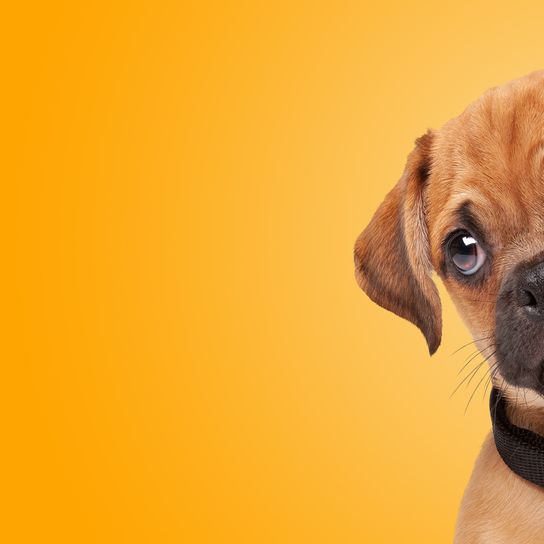
| Alternate Name | Cavapug, Cavalier King Charles Spaniel-Pug mix |
| Origin | England - China |
| Life expectancy | 9 - 15 years |
| Care requirements | low-maintenance |
| Activity level | average - low |
| FCI group | not recognised |
| AKC group | not recognised |
| KC group | not recognised |
More Cavalier King Charles Spaniel mixes
More Pug mixes
Attitude, character and temperament of the breed
Possible character traits
The Pugalier is usually described as friendly, even-tempered and people-oriented. It loves contact with its family and is usually affectionate and cuddly. He has often inherited a gentle, sensitive nature from his Cavalier parent, while the Pug part ensures a certain playfulness and cheerfulness.
Many Pugaliers are socially compatible and get on well with children, other dogs and even cats. They are generally adaptable, get on well both in an apartment and in a house with a garden and do not tend to bark excessively. Nevertheless, they need attention, do not like to be left alone for long periods and often seek to be close to their caregivers.
Intelligent but sometimes a little stubborn, they need loving but consistent training. With patience and positive reinforcement, they learn quickly and willingly.
Character
Usage
What diseases can occur?
Despite the hope of alleviating the typical health problems of the parent animals through crossbreeding, hereditary diseases can occur in the Pugalier - especially if breeding has not been carried out responsibly.
A common issue is brachycephaly, i.e. a shortened muzzle, which can cause breathing problems. If the Pug part of the breed is very prevalent, the dog can also suffer from shortness of breath, snoring, sensitivity to heat and limited resilience as a mixed breed.
Diseases such as mitral endocardiosis (a heart disease) or syringomyelia (a neurological disease) can be inherited from the Cavalier King Charles Spaniel. Other possible problems include eye diseases, skin fold inflammation, ear infections and obesity, as many Pugaliers have a very good appetite.
Regular veterinary checks, a good diet and moderate exercise are therefore particularly important.


This is what a Pugalier can look like
The appearance of the Pugalier can vary greatly - depending on whether it looks more like a Pug or a Cavalier. As a rule, it is a small to medium-sized dog with a compact, strong build.
The head is often roundish with a medium-long to slightly shortened muzzle. The eyes are large, round and dark, with a usually very expressive gaze. The ears are soft, drooping and well-coated.
The coat is usually short to medium length, can be smooth or slightly wavy and is soft to the touch. The Pugalier is very varied in color - common variants are beige, black, tricolor or brown with white markings. Some animals have the typical dark mask of the Pug on their face.
Overall, the Pugalier has a charming, friendly and often somewhat "babyish" expression - a dog that quickly wins hearts with its friendly appearance.
| Fur length | medium - short |
| Fur | flat coated |
| Ear shape | Floppy Ear - Tilt-ear |
| Tail | fanned out - stubby |
| Anatomy | - |
| Size ♀ | 22 - 33 cm |
| Weight ♀ | 6 - 8 kg |
| Size ♂ | 25 - 33 cm |
| Weight ♂ | 6 - 8 kg |
| Suitable For | Beginner, Children, Beginner, Children, Seniors |
Known Diseases
Kidney disease
Symptoms of kidney disease in dogs: increased urination (polyuria) increased water intake. Inflammation of the mucous membrane of the mouth. Loss of appetite
valvular insufficiency
Heart valve diseases in dogs are among the most common heart diseases. Most often it is an acquired change in a heart valve.
Mitral Valve Diseas (MVD)
Mitral valve disease in animals and dogs, respectively
Curly Coat Dry Eye
Eye disease in dogs.
Hip dysplasia (HD)
Hip dysplasia (HD) is a genetic condition in dogs where the hip joint is not shaped properly. This leads to pain, stiffness and restricted movement.
Denture malocclusions
Malocclusions of the dentition often occur in dogs with short muzzles.
Shortness of breath
Difficult breathing can be recognized by the dog's rattling and sometimes accelerated breathing rate.
Overweight
Often, unfortunately, the dogs very much under excess weight. But the dogs themselves are never to blame!
Heart disease
Can occur frequently in dogs and can sometimes be treated with medication.
Breathing problems
Dogs with shortened muzzles can often experience respiratory problems.
FAQ
-
A Cavalier King Charles Spaniel and Pug mix usually has the head and face of a Cavalier King Charles Spaniel and the body of a Pug. This can vary slightly depending on the lineage of the dog.
-
A Cavalier King Charles Spaniel and a Pug mix usually have a friendly and outgoing personality. They are often very affectionate and love to play with their family.
-
A Cavalier King Charles Spaniel and a Pug mix generally need moderate exercise. A daily walk or playtime in the garden should be sufficient.
-
A Cavalier King Charles Spaniel and a Pug mix usually require moderate grooming. They need to be brushed a few times a week and their nails should be trimmed regularly.
-
The health problems of a Cavalier King Charles Spaniel Pug mix include eye problems, hip dysplasia and elbow dysplasia.
















